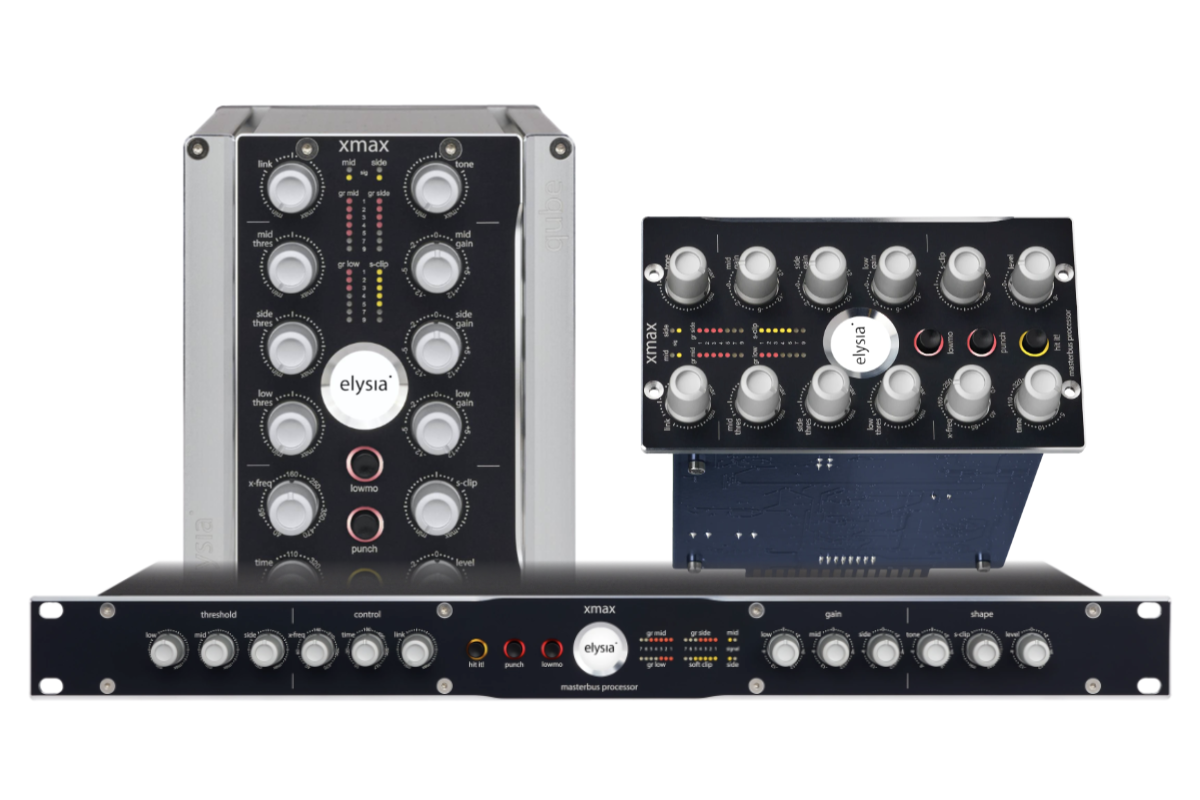Test: elysia xmax – World’s fastest hardware compression?

What can the xmax do?
The xmax can be seen as a 3-in-1 device in two ways, as on the one hand it combines a soft-clipper with multiband compressor and mid/side functionalities, and on the other hand, it processes the three bands with independent compressors. Mind you, all in stereo, which is not a given in this league.
xmax dissects the input signal into middle and side signals. The middle is further split into low and mid bands. The former can be set to mono with the lowmo button, and the three areas can be compressed separately. Finally, the level is processed with a soft clipper.
The compressor speed ranges from 10 to 800 milliseconds, from snappy short to almost a second. The frequency is also adjustable.
How does the xmax sound?
So much for the technical part. The available options are quickly internalized, and a look at the manual reveals everything important about the signal flow. Everything is very straightforward - the xmax is not meant for artistic tinkering or sound design, but for making things louder. So let‘s move straight on to practice.
As mentioned, the xmax sees itself at the end of the processing chain, so we fed it with several tracks - but not only that, because especially the mid/side options are also tempting for loops and individual tracks. You can find the test results in the magazine downloads or further down via the QR codes.
Scenario 1: Whole tracks
Applied to whole tracks, the xmax shows what it can do. An existing stereo field could be almost doubled with hard side compression. However, it‘s advisable to stay below the extreme settings, as the sound can otherwise become tiresome and aggressive.
The bass area becomes wonderfully full with minimal compression and a slight boost, and with the soft clipper, you can gain plenty of headroom, leading to a louder overall mix. All tracks - from psytrance to techno - sounded decently loud, compact, and full afterward.
It‘s worth noting that the xmax tends to be more moderate and clean - it‘s not responsible for massively pumping and roaring results. While it can distort at loud sources and maximum settings, it doesn‘t sound good.
Scenario 2: Single tracks
With single tracks, the xmax scored primarily as a kind of broadener and softener. We tamed too loud transients from synths and percussion using the clipper and added missing volume to lows and mids with low gain boost (and x-freq at 470 Hz). Even duller material could be made crisper with the tone control, without becoming too harsh.

Conclusion
Although the xmax has its limitations in terms of parameter offerings, on the other hand, it combines multiple devices in one and therefore only offers access to the most important settings. We found this well thought out because the focus is on getting straight to the point and the goal quickly. Nonetheless, the xmax is very flexible in its areas of application.
If you are used to working with many plugins, you need a moment to get into it. The impact of the parameters is rather subtle individually and only gains significant weight in the interplay of all. The xmax is a solid and serious tool for making tracks loud, increasing stereo width, and achieving a punchy, crisp, and transparent sound. All with analog sound and tactile feel, so that the ears can also decide.
The elysia xmax is available for 19-inch rack, API consoles, and in the Qube format for mobile and standalone applications.
Want more? Get more!



Subscribe to the digital edition of BEAT Magazine via Plugins-Samples.com and get more gear, in-depth workshops, reviews and 11 GB exclusive plugins and new sounds with every monthly issue!
Subscribe to Beat Magazine for only 4.99€ per month
